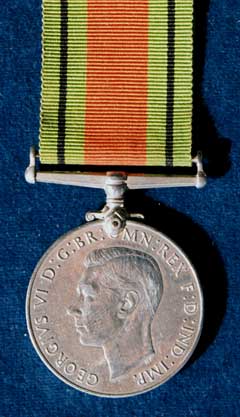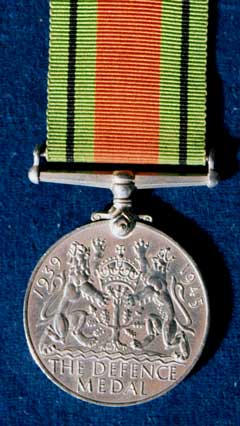 |
King's Own Royal Regiment Museum Lancaster |
|
|
HOME Museum & Collections Sales Donations Events Contact Us REGIMENTAL HISTORY 17th Century 18th Century 19th Century 20th Century First World War Second World War Actions & Movements Battle Honours FAMILY HISTORY Resources Further Reading PHOTO GALLERY ENQUIRIES FURTHER READING LINKS |
MEDAL INFORMATION The Defence Medal 3rd Sept. 1939 to 2nd Sept. 1945 Face
Reverse
Size
Composition
Ribbon
Suspension
Naming
Bars
Awarded Qualifications relating to the Army are as follows: 1. Three years service in non-operational areas subject to air attack or otherwise closely threatened. 2. One year's non-operational service overseas, or six months non-operational service overseas in territories subject to air attack or under threat of invasion by the enemy. 3. Three months service in operational bomb and mine disposal units. 4. Three years service in the Home Guard. 5. Service curtailed by death or service wounds due to enemy action qualified, as, in certain circumstances, did those who received an award or commendation. The Defence Medal was not issued automatically. Those who thought they qualified had to claim it. The
King’s Own Defence Medals in the museum's collection
The Defence Medal |


